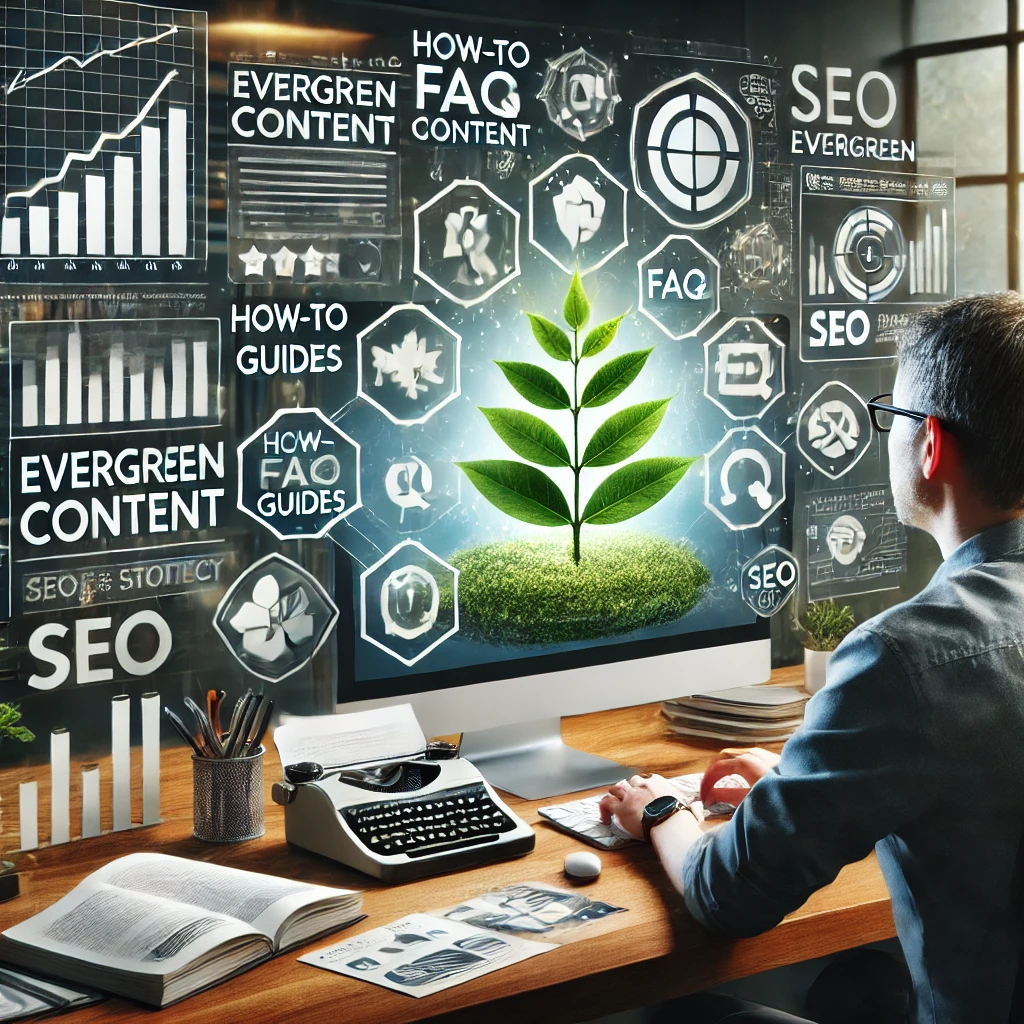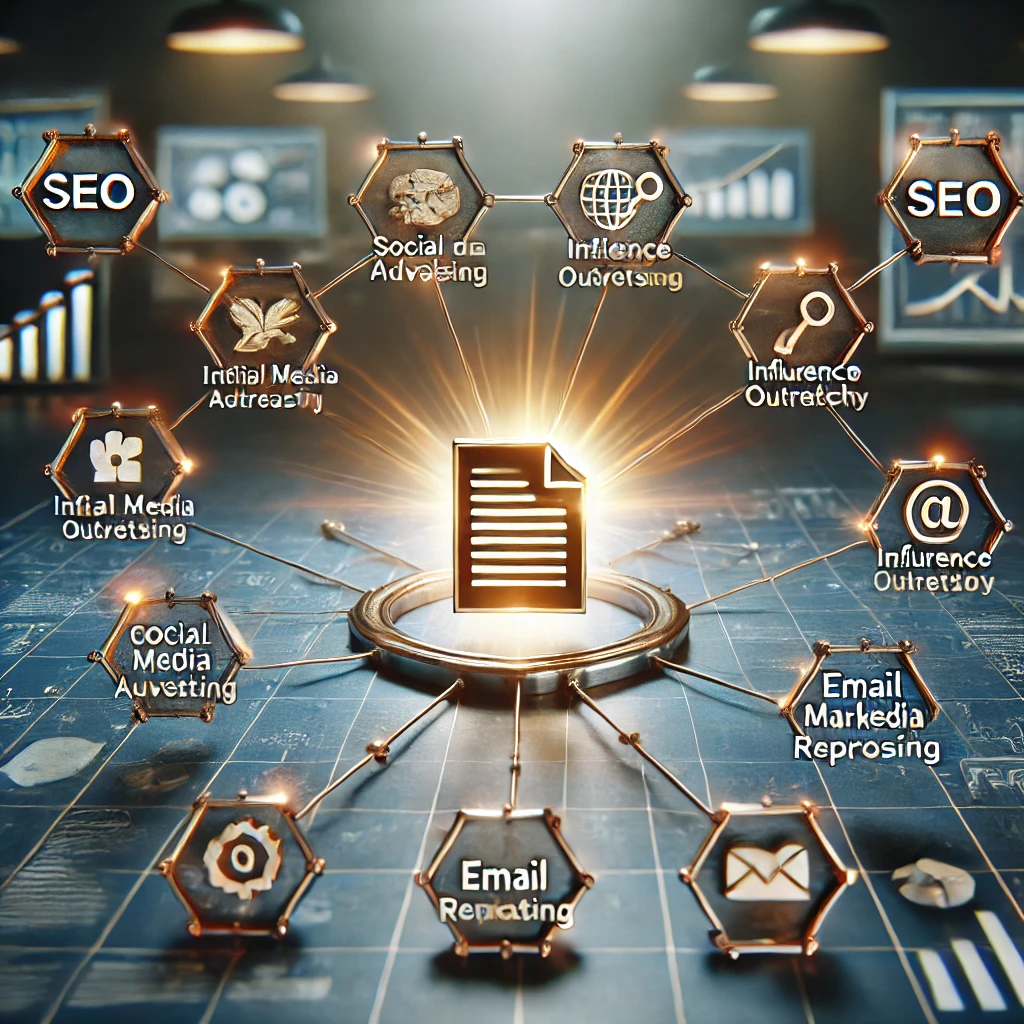
In the fast-paced world of digital marketing, many brands focus on trending topics, seasonal campaigns, and short-term spikes in traffic. While this approach has its benefits, there is another powerful element that should be a core part of any content strategy: evergreen content. Evergreen content, unlike time-sensitive material, remains relevant and valuable over time. It consistently drives traffic, engagement, and leads, acting as a foundation for long-term success.
In this blog post, we’ll explore the importance of evergreen content, provide examples of timeless topics, and share tips on how to create valuable pieces that will continue to benefit your business for years to come.
What is Evergreen Content?
Evergreen content refers to articles, blog posts, guides, or videos that stay relevant long after they’ve been published. Like the evergreen trees that stay green year-round, this type of content continues to provide value regardless of trends or time-sensitive events.
Evergreen content tends to focus on topics that don’t go out of style and often answers common, recurring questions. While it might need occasional updates, the core information remains useful for a long period, making it a key asset in any content strategy.
Why is Evergreen Content Important?
- Long-Term Traffic Generation
- One of the primary benefits of evergreen content is that it continues to generate organic traffic over time. Instead of a quick spike in views that dwindles after a short while, evergreen content can attract visitors for months or even years. This consistent traffic boosts your site’s overall visibility and helps build domain authority.
- Search Engine Optimization (SEO)
- Search engines like Google value high-quality, evergreen content. Well-researched and optimized evergreen content tends to rank well for relevant keywords, and as it continues to be useful, it maintains its rankings. By focusing on SEO-optimized, timeless pieces, your website can consistently appear in search results for common queries.
- Saves Time and Resources
- Evergreen content requires less frequent updating than other content types. Once you’ve created a valuable resource, you don’t have to constantly replace it with new material. Instead, you can occasionally refresh it with updated information, which is far more efficient than creating brand-new content every time you want to engage your audience.
- Establishes Authority and Trust
- High-quality evergreen content demonstrates expertise in your industry or niche. When your audience finds that your content provides value regardless of when they read it, they are more likely to trust your brand. Over time, this builds credibility and positions your business as a thought leader.
- Supports Lead Generation and Conversion
- Evergreen content is highly effective for lead generation because it addresses ongoing audience pain points and questions. If your evergreen pieces are structured around solving problems or providing key insights, they can serve as powerful tools to capture leads and nurture them through your marketing funnel.
Examples of Evergreen Content
Not all content types are created equal when it comes to staying power. Here are a few types of content that tend to have evergreen potential:
- How-to Guides
- Tutorials that provide step-by-step instructions for common tasks are highly sought after and useful for long periods. For example, a post like “How to Start a Blog in 10 Steps” will remain relevant for anyone looking to start blogging, regardless of when they find the article.
- Frequently Asked Questions (FAQs)
- FAQs cover the recurring questions that your customers or readers commonly ask. A post titled “What Is Content Marketing?” will be useful to beginners for years because it explains a fundamental concept.
- Listicles
- List posts such as “10 Best Practices for Social Media Marketing” or “Top 5 Ways to Save Energy at Home” can remain valuable as long as the information is regularly reviewed and updated.
- Product Reviews and Comparisons
- Reviews or comparisons that help consumers make informed decisions have long-lasting relevance. For example, a post like “WordPress vs. Squarespace: Which Is Best for Your Business?” can stay evergreen by highlighting key features and use cases.
- Glossaries or Definitions
- Industry-specific glossaries or posts that define key terms (e.g., “SEO Glossary: 20 Essential Terms You Need to Know”) continue to attract visitors as people frequently search for basic explanations.
Tips for Creating Evergreen Content
1. Focus on Timeless Topics
- Choose topics that will remain relevant and useful to your audience for the long haul. Avoid writing about short-term trends or news events that will lose relevance quickly. Instead, opt for subjects that have staying power, such as “How to Improve Customer Retention” or “Best Practices for Email Marketing.”
2. Do In-Depth Research
- Quality is crucial for evergreen content. Ensure that your content is well-researched and thorough. Use credible sources and include actionable insights. The more detailed and accurate your content, the more likely it is to be referenced and shared over time.
3. Optimize for SEO
- Since evergreen content is built to last, it’s important to make sure it is optimized for search engines. Include relevant keywords, use proper meta descriptions, and ensure that the content structure (headings, subheadings, etc.) is optimized for both readability and search engines.
4. Update Regularly
- While evergreen content should remain relevant over time, you’ll need to update it occasionally to ensure accuracy. Whether it’s adding new information, updating statistics, or tweaking the SEO strategy, these small updates can keep the content fresh without requiring a complete overhaul.
5. Make It Shareable
- Encourage readers to share your evergreen content by incorporating social sharing buttons and writing content that appeals to a broad audience. Since evergreen content stays relevant longer, it has a better chance of being shared multiple times, increasing its reach.
6. Include Evergreen Visuals
- The same principle applies to visuals. Use images, infographics, or diagrams that aren’t tied to specific dates or events. This makes your content more timeless and relevant for years to come.
7. Create Strong Internal Linking
- Evergreen content should be a cornerstone of your content marketing strategy. Make sure to link to your evergreen content from other pages on your site to boost its visibility and drive more traffic. Additionally, linking out to it in relevant future posts can help maintain its performance.
Evergreen content is a key asset in any successful content strategy. It offers long-term value, driving consistent traffic, improving SEO, and building authority. By focusing on creating high-quality, timeless pieces that answer common questions and provide lasting value, you can set your content marketing efforts up for sustained success. Invest in evergreen content today, and you’ll continue reaping the benefits for years to come.

